Siren 3 Pro, boat monitoring evolved
Since the introduction of their first boat monitor nearly a decade ago, Siren Marine has been a leader and innovator in boat monitoring. The Siren 3 family of monitoring products encompasses their decade of experience and promises a comprehensive boat monitoring system. With wired, wireless, and NMEA 2000 sensors the system has the ability to monitor nearly every aspect of your boat, and it can even control your boat remotely. But, how does it all work together? I’ve been testing the Siren 3 Pro aboard Have Another Day and can share some results.
Dating all the way back to the Sprite and Pixie, Siren focused on giving boat owners the peace of mind that their boat is healthy, ready to go, and still where they left it. But, Siren has come a long way from the early days of Sprites and a text messaging-based system. They’ve moved from simple SMS-based commands to a feature-filled app that makes it easy to keep tabs on your boat. Now, with NMEA 2000 support, wireless sensors, wired sensors, satellite capabilities, and more, Siren is working to deliver on their Connected Boat tagline.
Siren 3 family
Siren unveiled the $749 Siren 3 Pro first, but will build a family of Siren 3 products with two more models to follow. The pro will be the top of the eventual line with a Siren 3 Plus and Siren 3 slotting in below. The Siren 3 Pro offers dual CAN interfaces (one for NMEA 2000 and one for J1939), dual wired harnesses, external antenna connections for cellular, wireless sensors, and GPS. They expect to release The $499 Siren 3 Plus by the end of 2021 and will offer a single CAN interface for NMEA 2000, one wired harness, and all internal antennas. They aim to launch the Siren 3 by the end of 2022 with a price target of $199. The 3 will not have any CAN interfaces and a simplified harness.
All three models will support up to 14 wireless sensors and have a 4g/5g cellular radio. Monitoring rate plans will also be the same for all three products at $180 a year, about $18 per month, or $125 for April 1 to October 31 seasonal monitoring.
Siren App
The Siren app is your main interface to the Siren system. It allows you to see your boat’s status at a glance and then drill into the details. Each tile represents a sensor while the map at the top allows you to see your boat’s current location. If a sensor is in alert, it will have an orange background.
Clicking on a home screen tile loads detailed status about a sensor. The detail screen allows you to set alert parameters, view charts of historic data, and control the alerting rules used by each sensor. I really appreciate the granular thresholds of each sensor and the ability to control individual alerts.
Wireless sensors
Siren’s second-generation product, the MTC, introduced wireless sensors. I’ve had mixed experiences with boat monitors and wireless sensors. They’re great because it means you don’t have to run wiring from the central monitoring unit to each monitored element. But, if the wireless link isn’t totally reliable, the system is prone to false alarms, missing real events, and generally frustrating the boater.
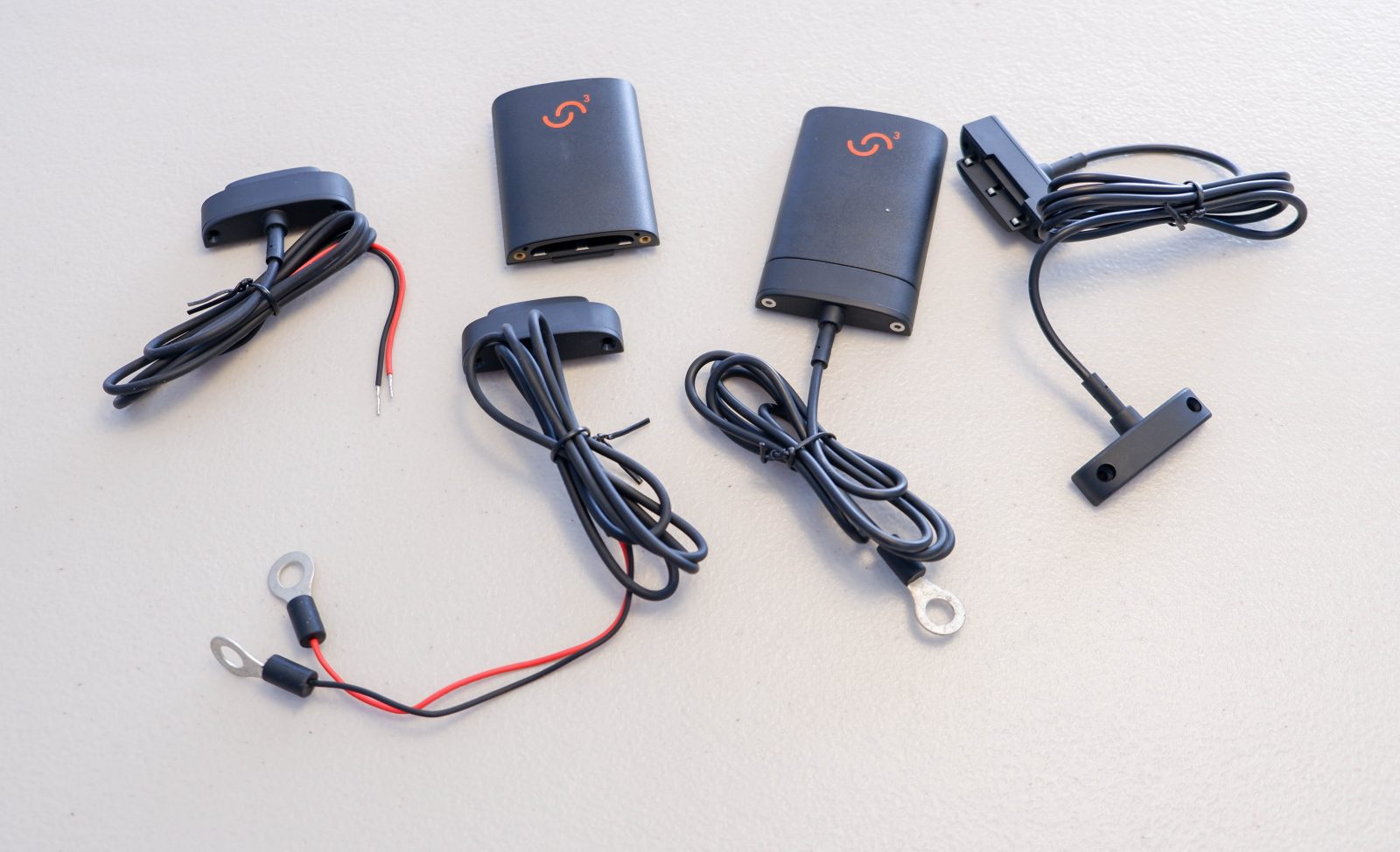
Each $129 wireless sensor contains an internal temperature sensor and magnetic reed switch. The reed switch allows you to use the sensor as an entry sensor when paired with a magnet. Additionally, Siren offers tails for monitoring batteries, bilge pumps, high water, and temperature. You can also use the internal temperature sensor, but not with another tail or the entry sensor.
Boats can be challenging environments for wireless links. Larger boats tend to have myriad wireless systems running, lots of structural metal, and generally hostile RF environments. The wireless sensors Siren used with MTC worked very well on many boats. But, bigger boats with more RF interference and tougher spaces to reach had some troubles. I experienced some of those difficulties aboard Have Another Day.
Fortunately, Siren put a lot of engineering brainpower into ensuring the wireless sensors on their third-generation systems would be reliable. Siren re-engineered the wireless system and improved nearly every aspect of their communications. The Siren 3s now enjoy bi-directional communications with their sensors. This means, among other things, that the Siren 3 can perform over-the-air firmware updates on the sensors.
The back of each wireless sensor has a QR code on it which makes adding sensors to your system very easy. By selecting the settings menu and choosing”Add Wireless Sensor” you initiate wireless sensor pairing. Now, you use the camera on your phone to scan the QR code which contains the sensor’s identifier. With the sensor scanned, you just pick the sensor type and select a name for the sensor to complete pairing.
NMEA 2000 and J1939 support
Towards the end of the MTC era, Siren began showing NMEA 2000 integrations using a customized Actisense NGT-1. NMEA 2000 support allowed the MTC to read tank levels and engine information from the NMEA 2000 network. Plus, Siren showed the ability to control C-Zone digital switching systems. The 3 Pro and 3 Plus have NMEA 2000 interfaces built into the unit so no NGT-1 needed.
Siren 3 Pro comes with two CANBus interfaces. One interface connects to an NMEA 2000 network and the other is a J1939 interface allowing the 3 Pro to read engine and transmission information in OEM installations. For aftermarket installations, Siren uses J1939 to NMEA 2000 gateways to convert J1939 data onto the NMEA 2000 network and then reads the engine information from NMEA 2000. I’m using J1708 to NMEA 2000 engine gateways aboard Have Another Day to provide this information to the NMEA 2000 network. The 3 Pro is then picking up the data and displaying it in the app.
Currently, the system reads tank level and engine information from a connected NMEA 2000 network. Siren is working on processing more information from the network with environmental data like depth, wind speed, and water temperature first on the list to add.
Siren supports CZone switching today and is currently testing EmpirBus control as well. Remote digital switching control means that not only can you monitor the status of your boat, but you can take action if something needs changing.
Amazon Alexa skill
Siren offers an Alexa skill so you can ask any Amazon Alexa enabled device about your boat’s status. Alexa can tell you about any connected sensor on the boat. As you can hear in my recording above, the skill seems responsive and is an easy way to get a quick update on your boat.
Monitoring results
Immediately after setting up my system, it went right about monitoring Have Another Day. I found the app updated quickly and reliably. Even with wireless sensors in the most challenging locations for RF to make it back to the main unit. Have Another Day’s salon sliding glass door has a heavy metal frame that has proven tricky for other RF sensors. The Siren 3 sensor hasn’t had any troubles sending data back to the Siren 3 and I’m consistently impressed by the app’s update speed when the door opens.
I have a total of 8 wireless sensors aboard Have Another Day and they’re all working very well. I’ve lifted numerous float switches and dunked a few water sensors in cups of water just to be sure alerts occur quickly and reliably. So far, so good.
Once I finished the install I didn’t think about the system much and that’s a good thing. The job of a good monitoring system is to worry about your boat so you don’t. The Siren 3 Pro on Have Another Day has done exactly that. I know that if anything goes wrong with any of the monitored systems, I’m going to hear about it. That’s great peace of mind and just exactly what I want from a monitoring system.
Boat monitoring to telematics
Siren may have started as a boat monitoring company long before the term telematics had been applied to the marine market. But, their leadership position in the boat monitoring segment means they’re in a great position to help deliver valuable data to boat builders, component manufacturers and boat dealers. Siren systems are either standard or optional equipment on boats from an impressive list of builders including Hinckley, Mag Bay, MJM, and Riviera. Plus, earlier this year Siren and Yamaha announced a partnership focused on bringing Siren’s data gathering abilities to Yamaha engines.
At this year’s IBEX, I moderated a panel discussion with Siren Marine CEO Jeffrey Poole, Honda Marine’s Jim Loftus, and Boston Whaler’s Chris Wachowski discussing the opportunities and challenges of collecting and acting on all the data onboard monitoring systems can offer. The consensus of the group is that the technology exists to greatly improve the ownership experience for boaters.
Improvement opportunities
Siren 3 is a highly evolved monitoring system and in my testing, it’s worked well. But that doesn’t mean the system is perfect. I think there are several opportunities for improvement to the system overall.
Battery monitors
The battery monitor tail has a molded plastic collar where the outer jacket of the cable is removed for the positive and negative conductors. The trouble is, there’s not enough positive and negative wire exposed. Even on a relatively common battery, like a group 31, the leads aren’t really long enough to make it between the posts on the battery. Plus, on larger batteries and bus bars, I found the eyelets installed on the wires weren’t large enough. So, I had to cut off the eyelet and crimp a larger one on.
Current sensing
Although some monitoring products have added current sensing abilities to bilge pumps and battery monitors, Siren Hasn’t. Current measurements can tell you a lot about how these systems are working. For example, monitoring the current consumed by a bilge pump gives much greater insight than just if it’s running. Let’s take a 2,000 gallon-per-hour bilge pump. Running and pumping water the pump might consume around 10 amps. Free-wheeling and not pumping any water might consume half or less current. On the other hand, if the pump has ingested a zip tie or other debris, you might see current consumption double or worse.
But, I wonder if part of Siren’s thinking is a concern for complicating a critical safety system like bilge pumps. There’s great information from introducing current monitoring, but it comes at the cost of adding complexity to the pump. Monitoring for bilge pump activation just requires a tap to the circuit so that voltage can be sensed. On the other hand, current monitoring requires placing a current measurement device in the circuit. And that means modifying the bilge pump circuit, introducing new components, and more connections in that circuit.
Wired bilge pump monitoring
Along the lines of keeping it simple; I was a little disappointed to find there aren’t any wired bilge pump channels on the Siren 3’s wiring harnesses. You can connect up to two wired high water monitors but all bilge pump monitoring requires the use of wireless modules. Personally, I’d prefer the option to monitor bilge pumps via a wired connection.
Final thoughts
Siren’s third-generation products build on their decade of experience and deliver a polished and powerful monitoring experience. Both the equipment and the monitoring services are reasonably priced. The Siren 3 hardware has plenty of capabilities and I expect that Siren will continue to add new functionality for years to come.


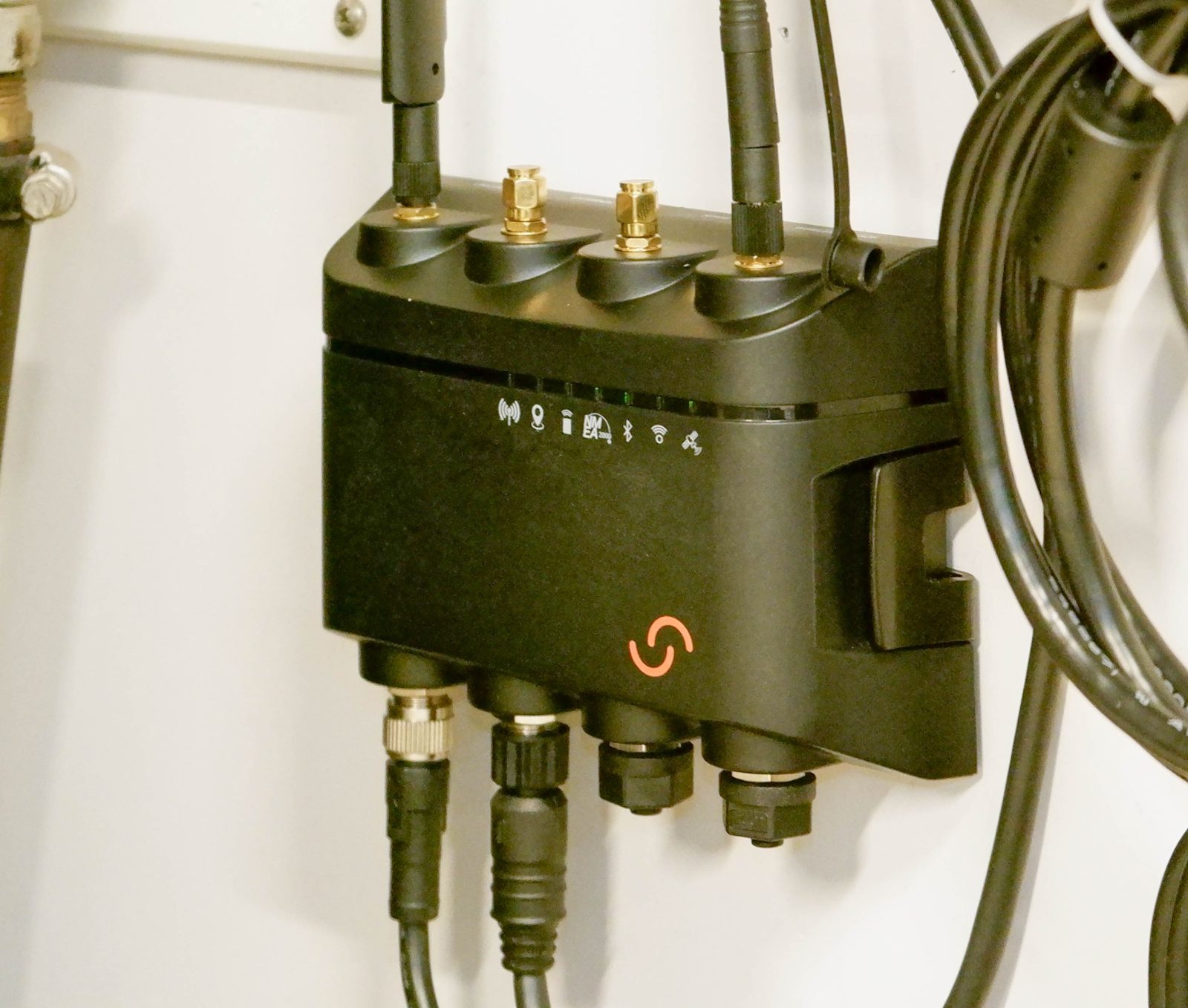
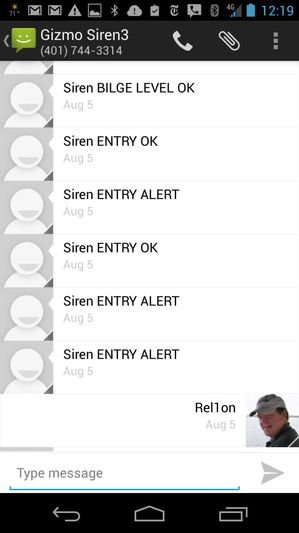
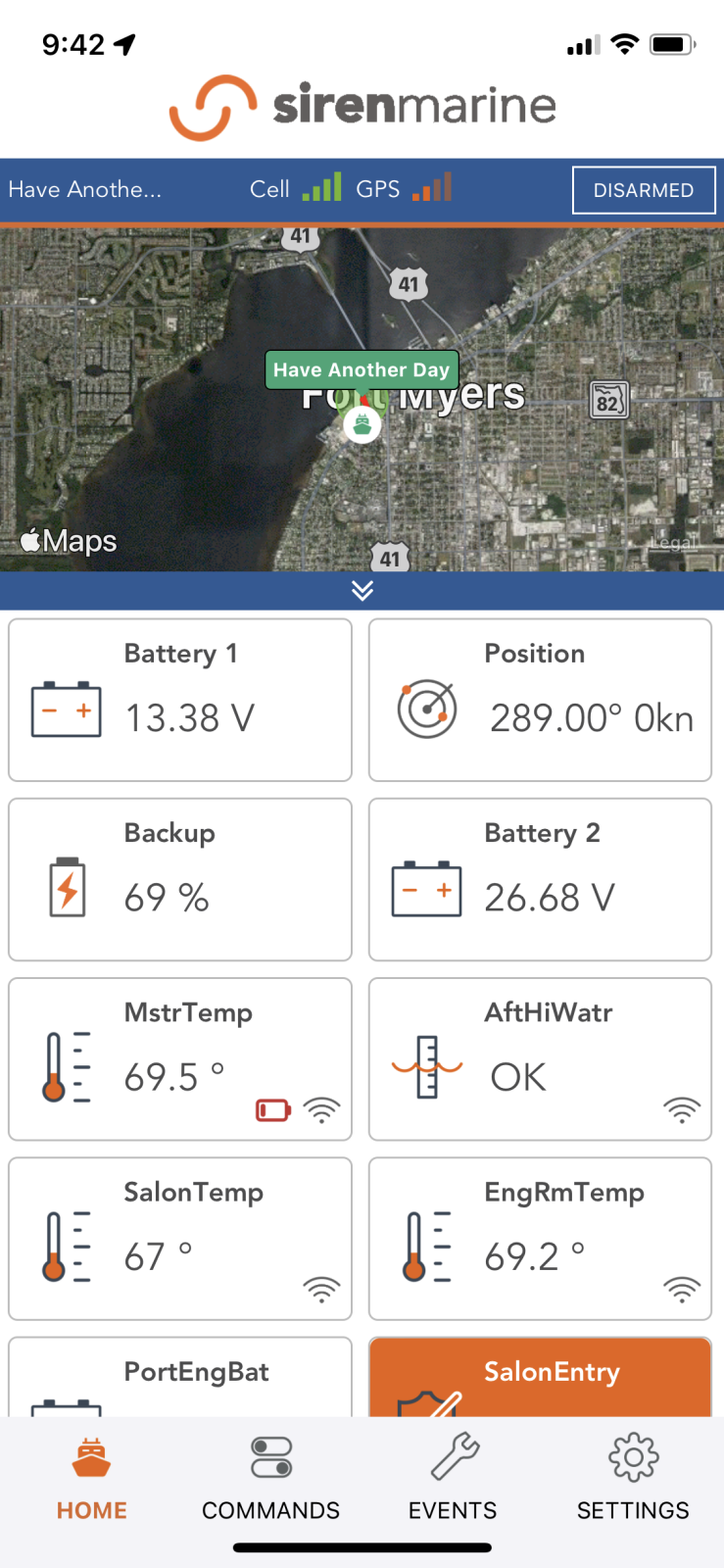
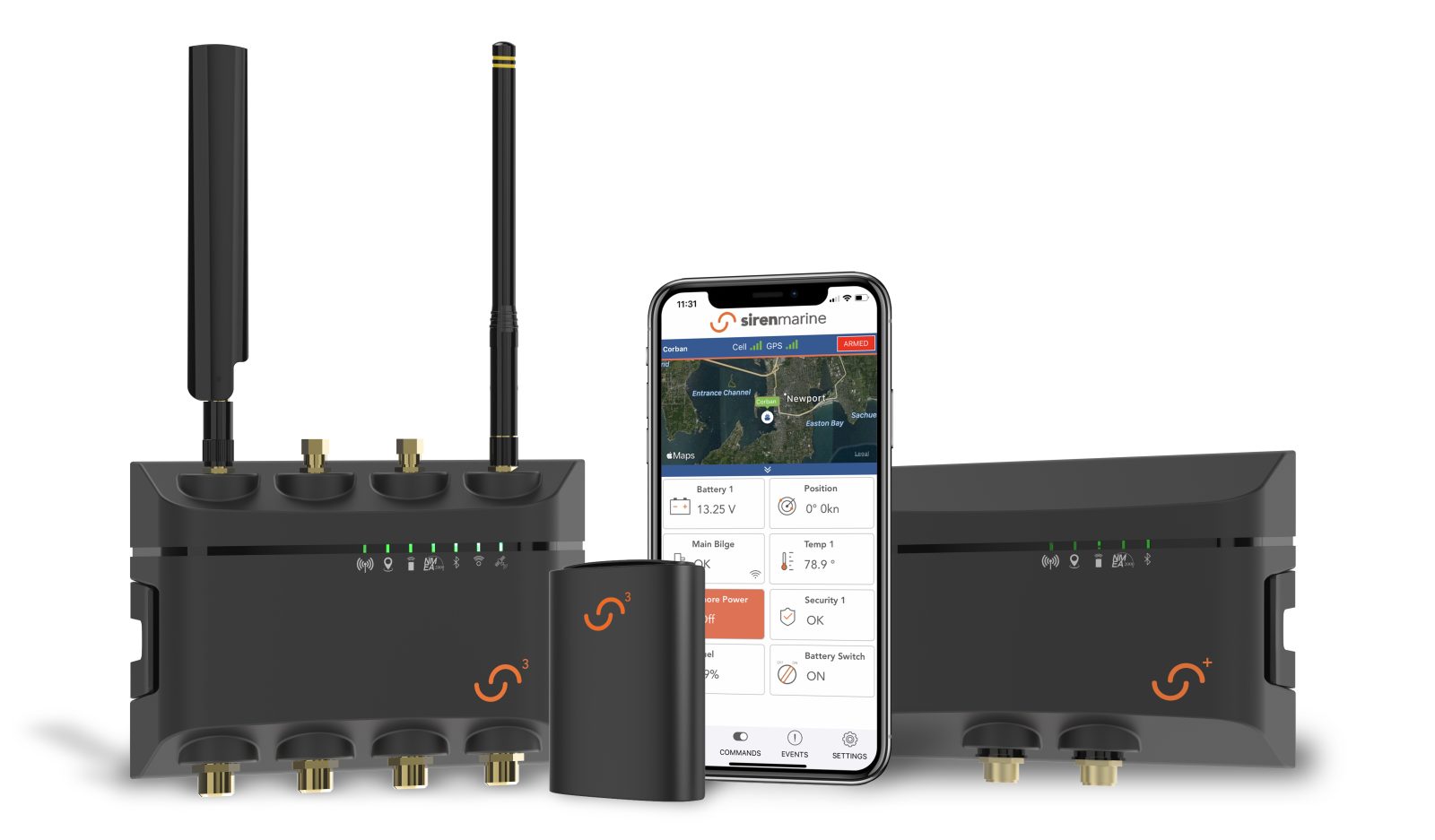
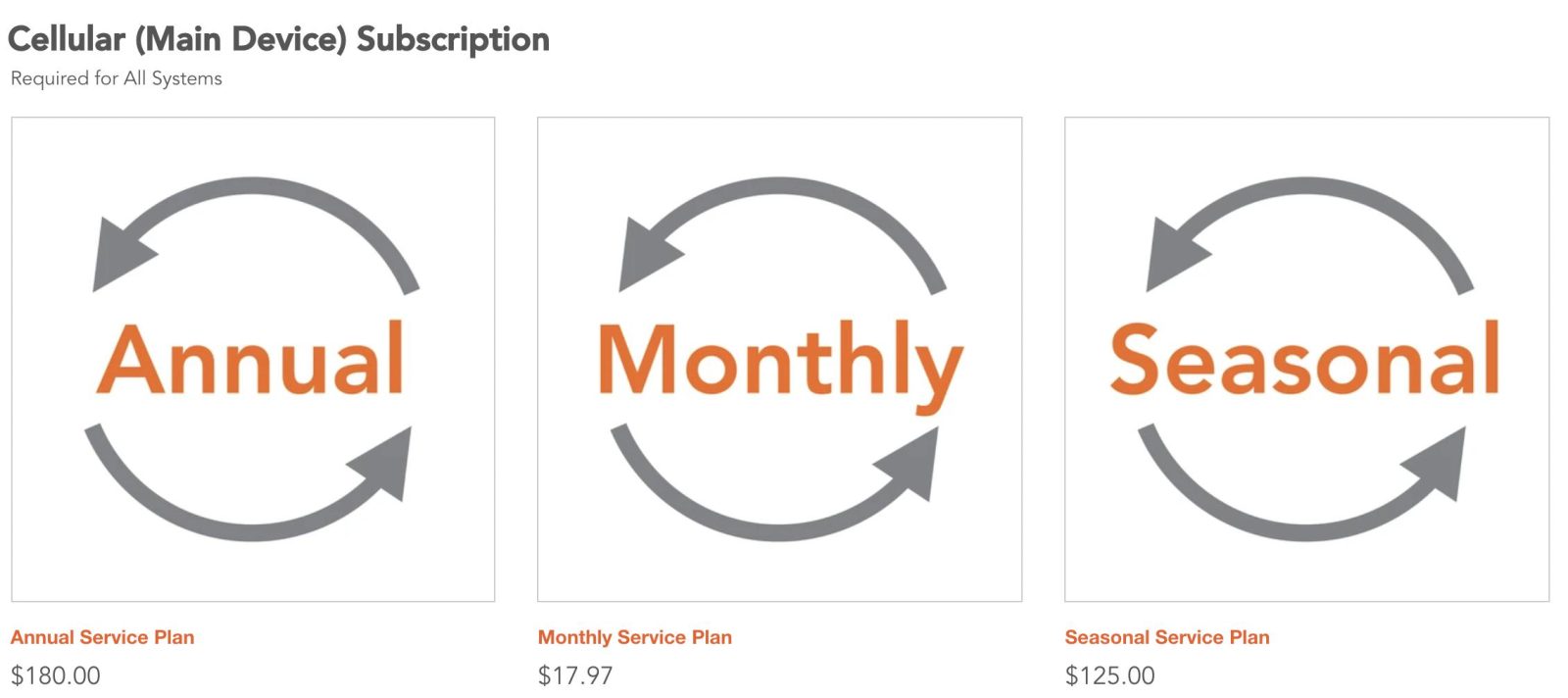
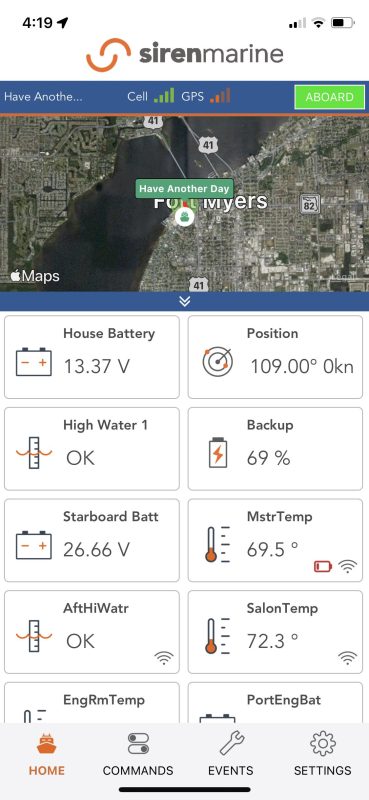
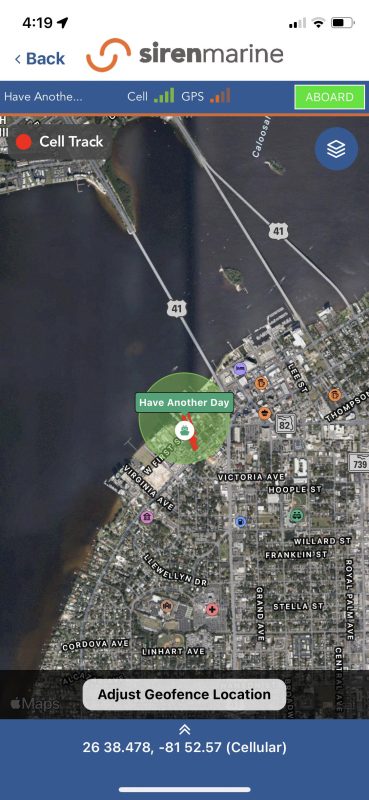
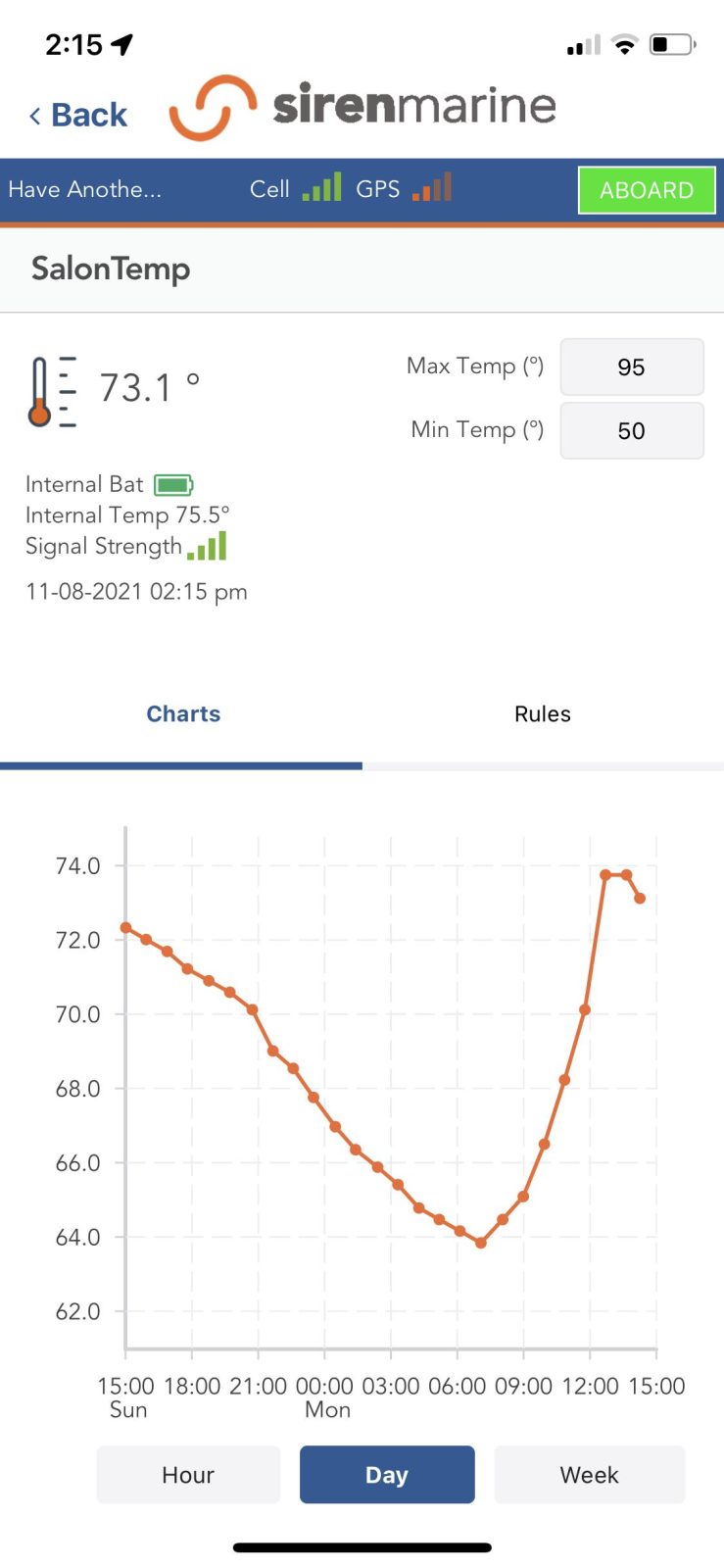

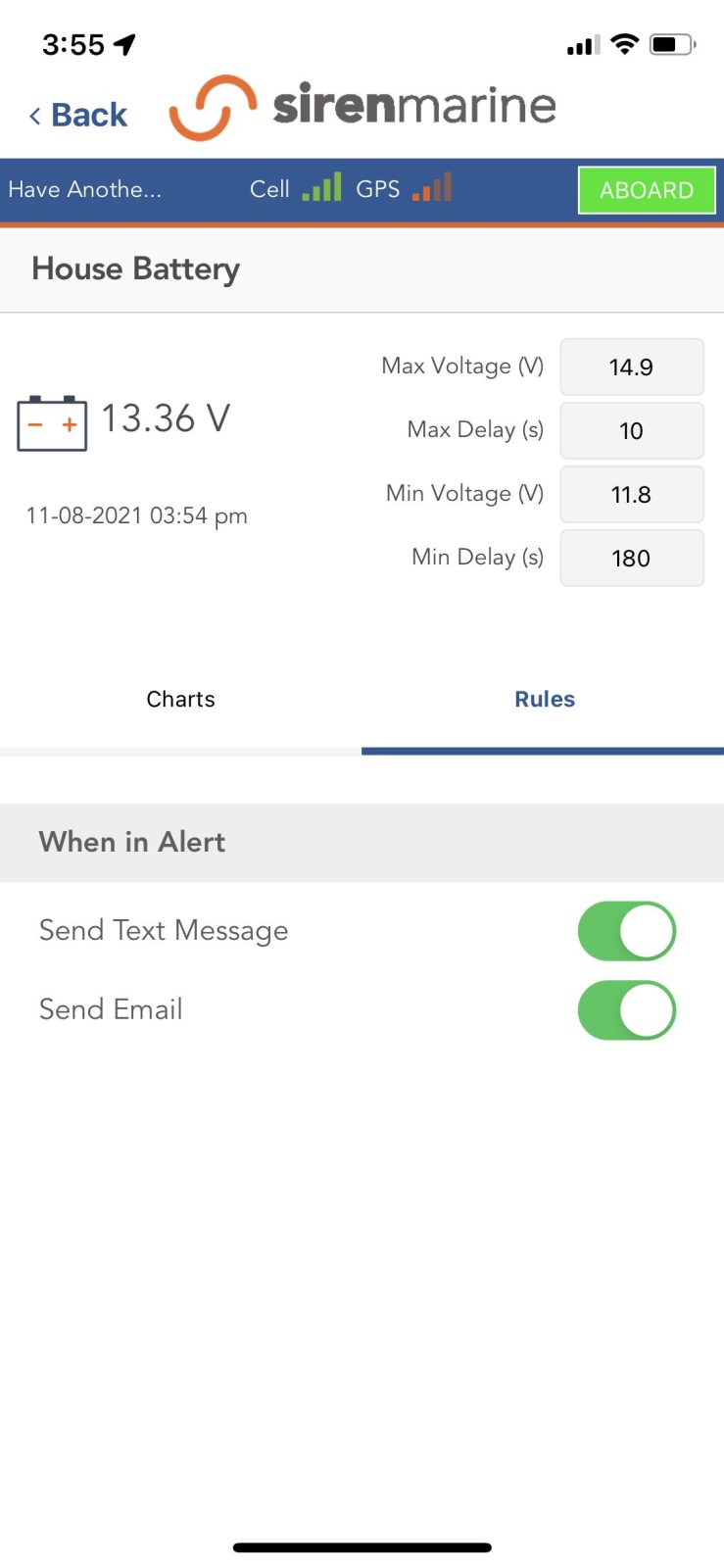
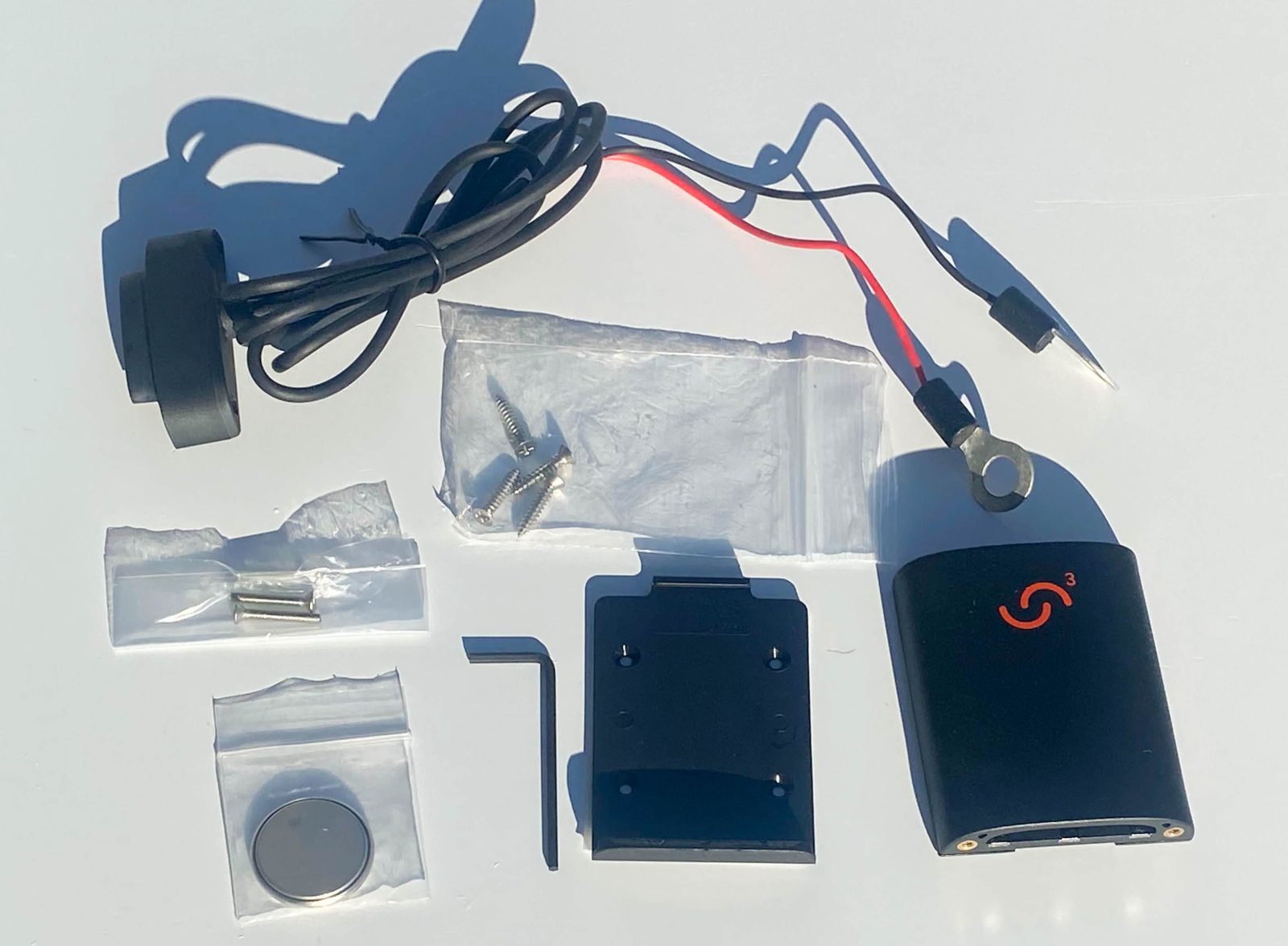
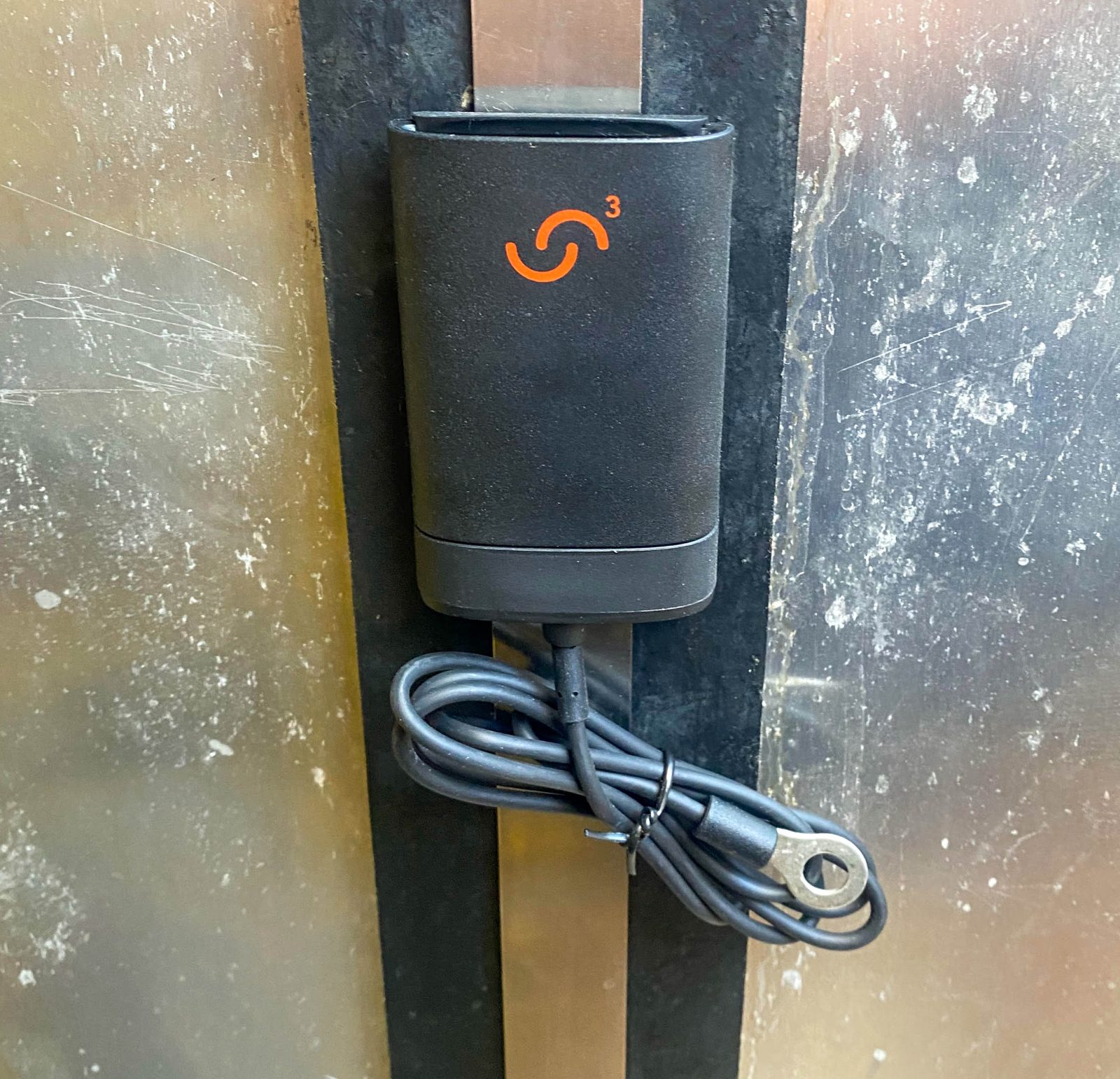
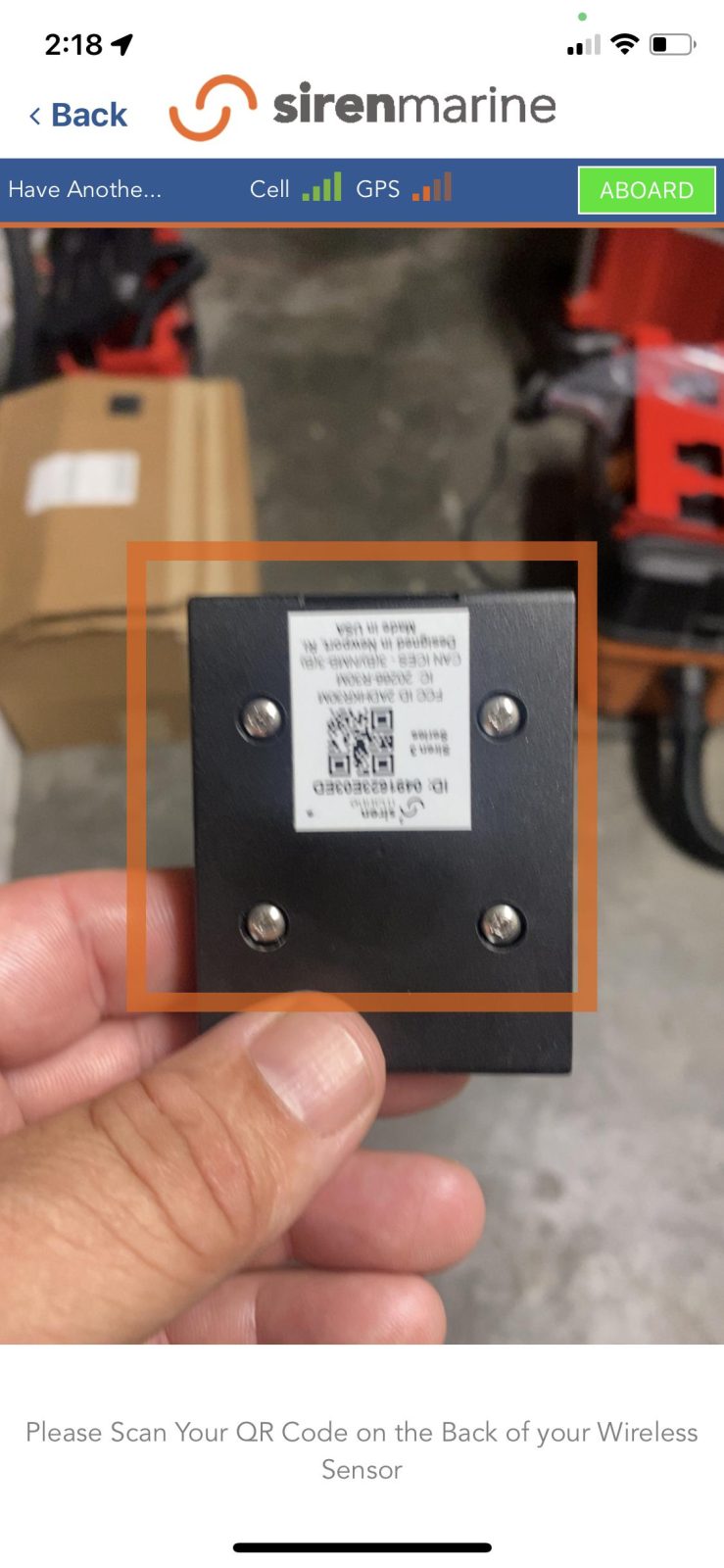
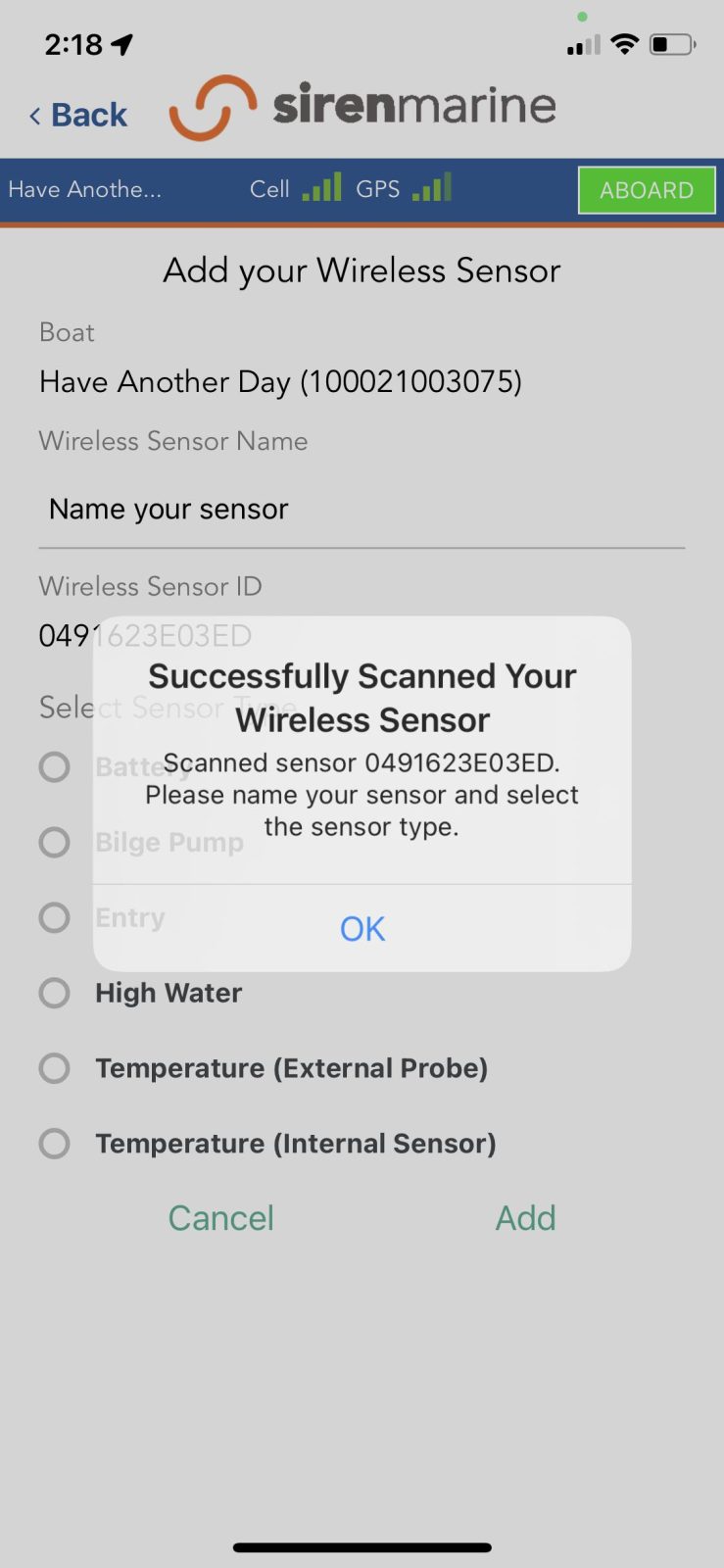

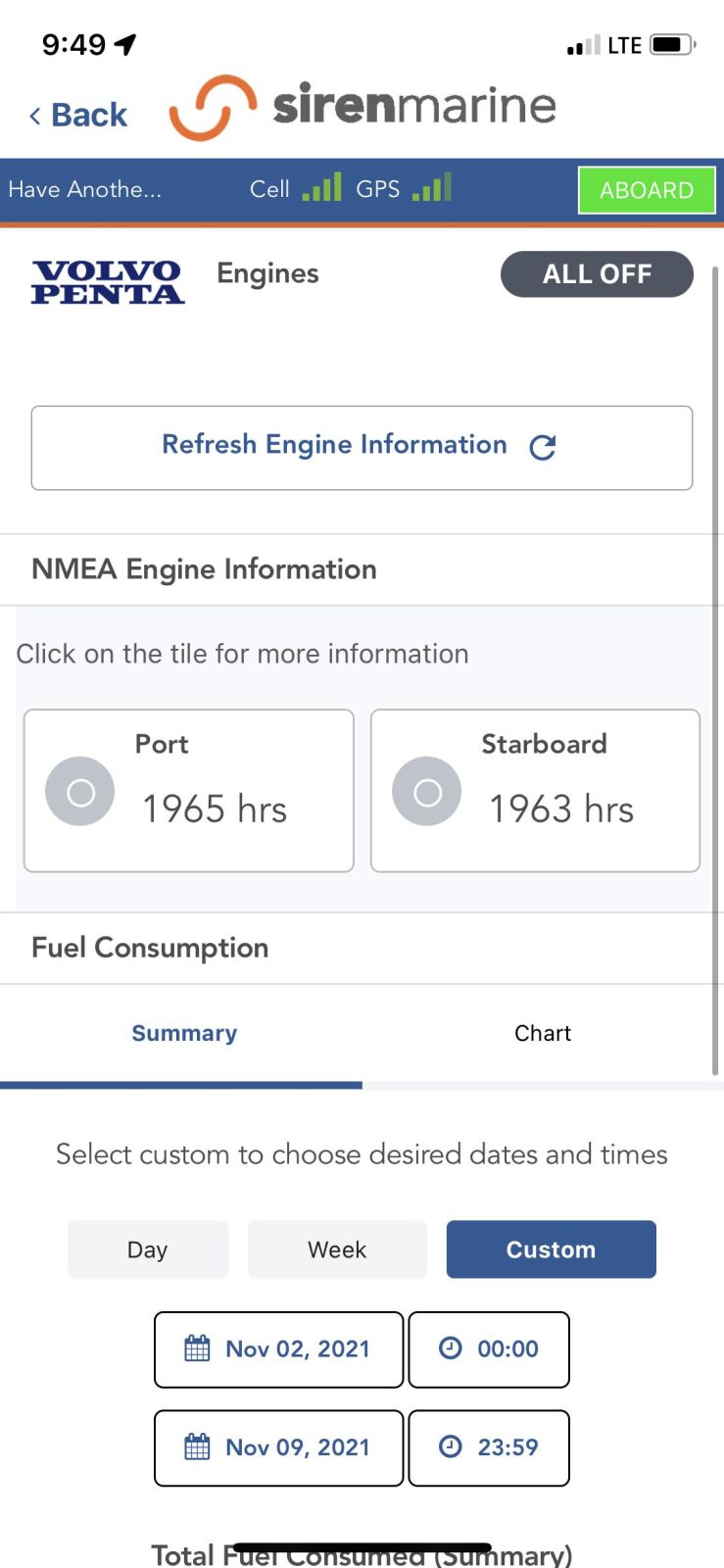
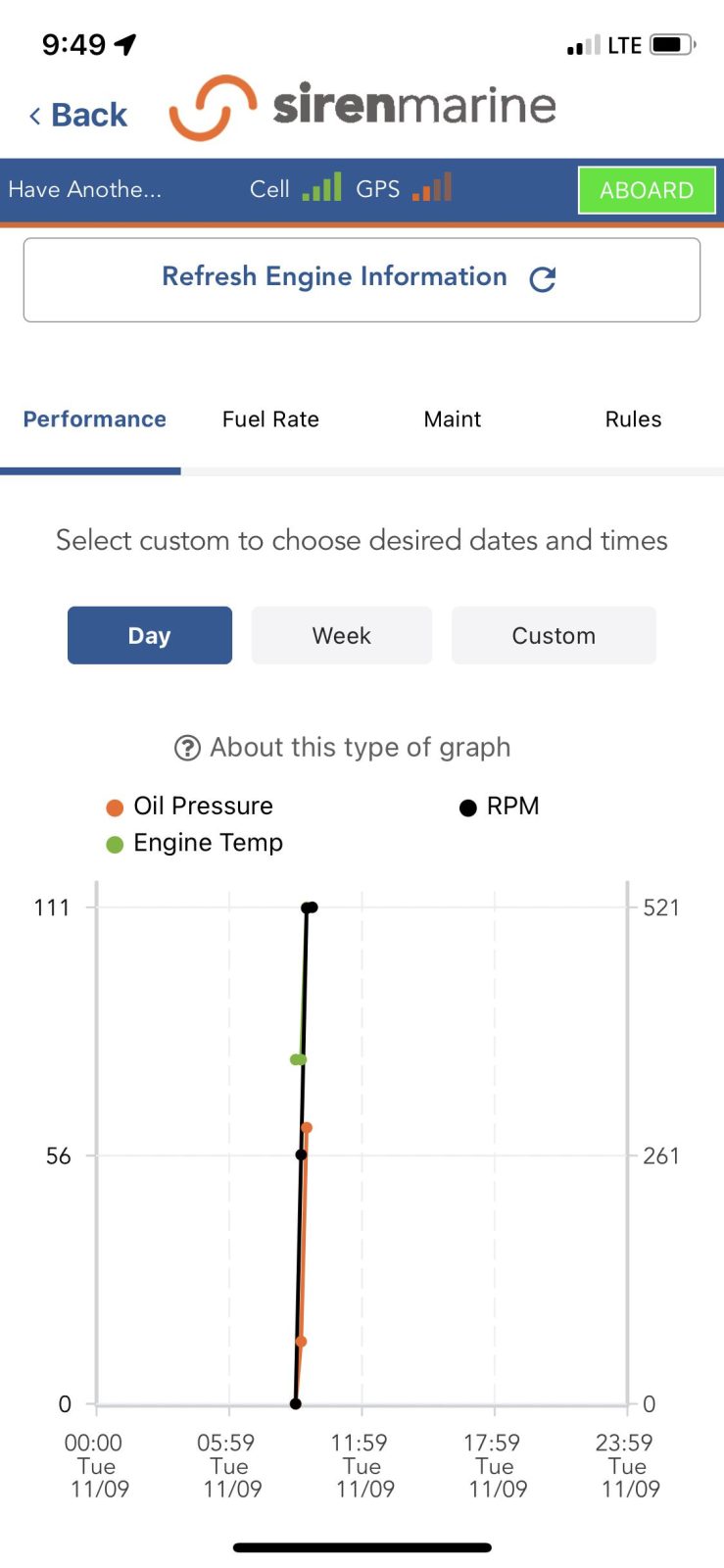

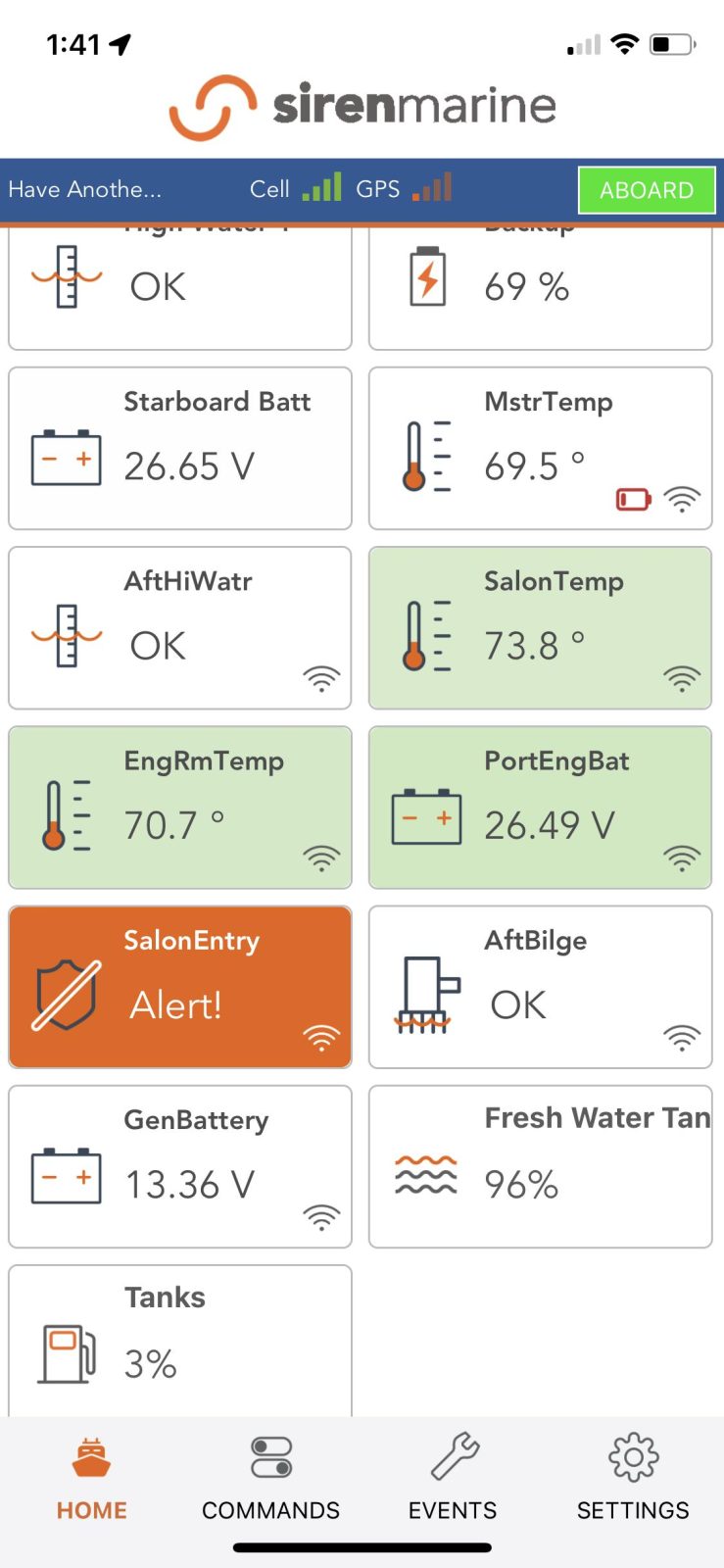
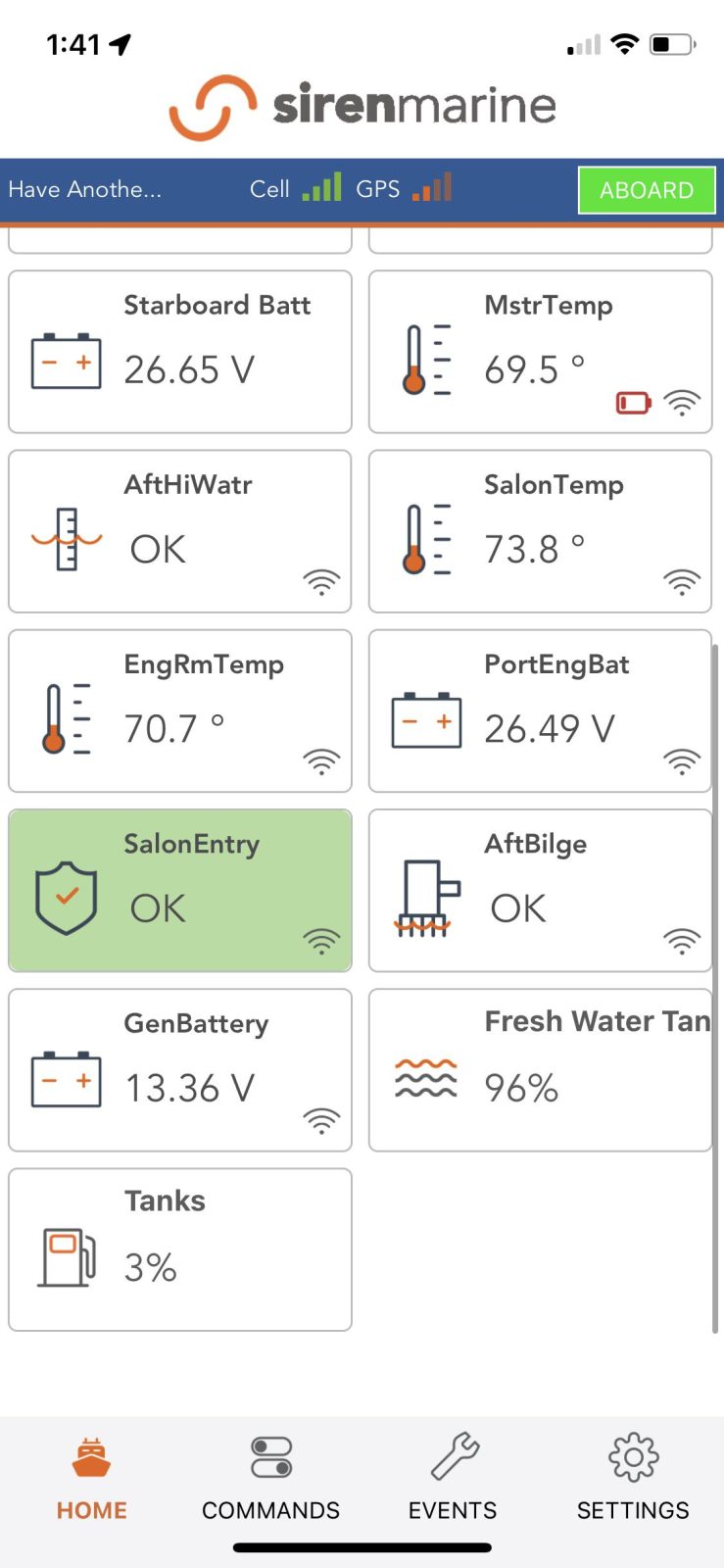
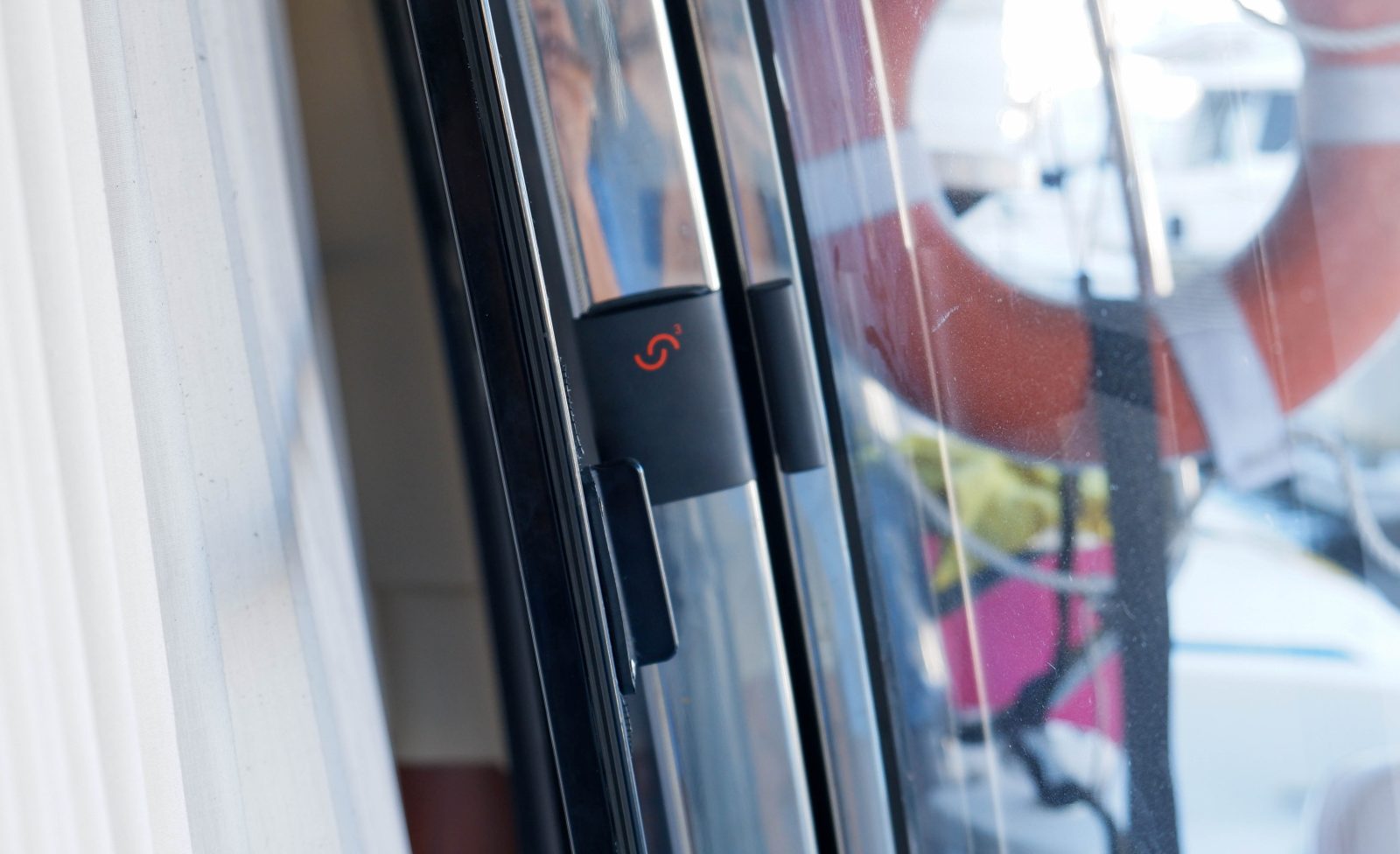
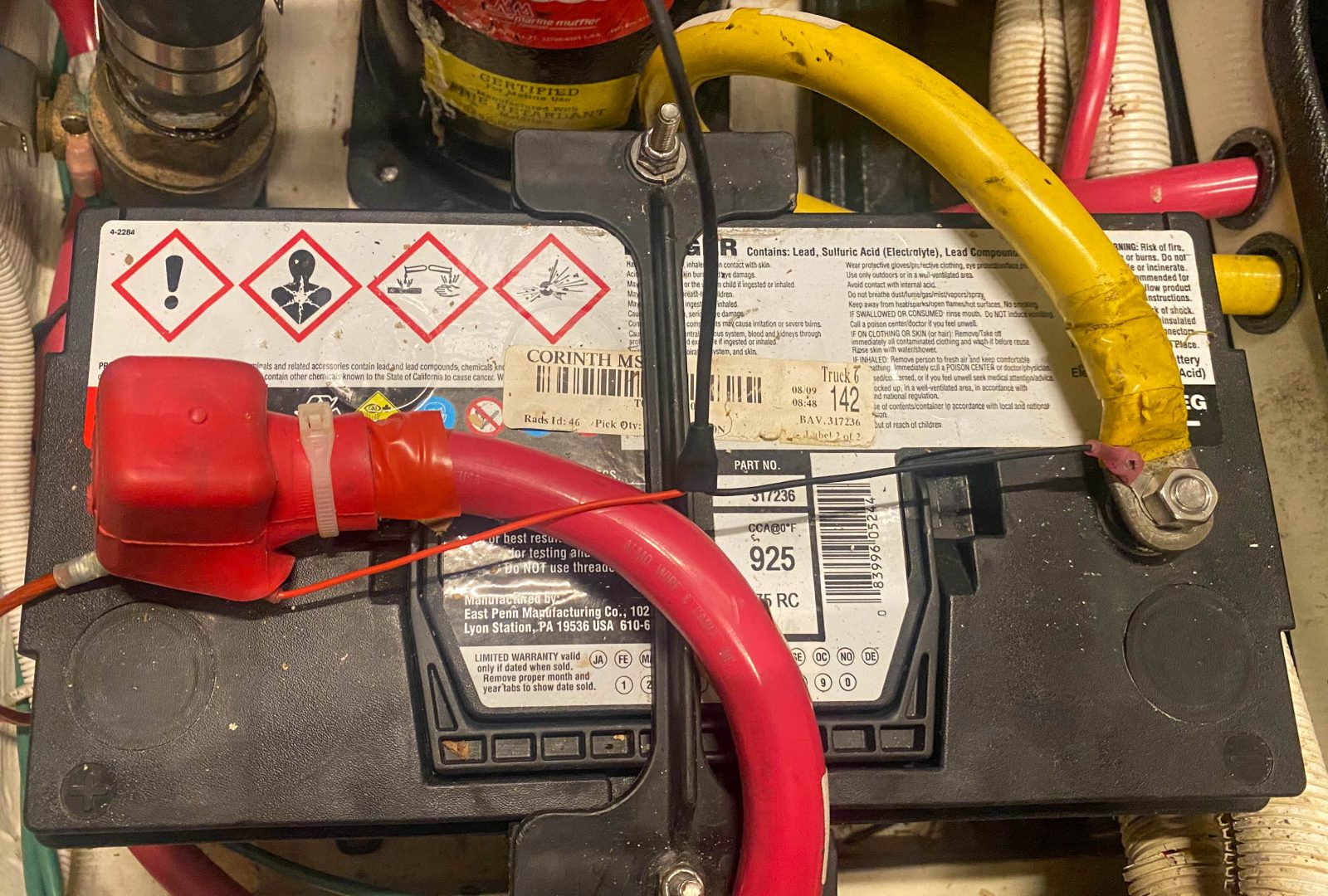
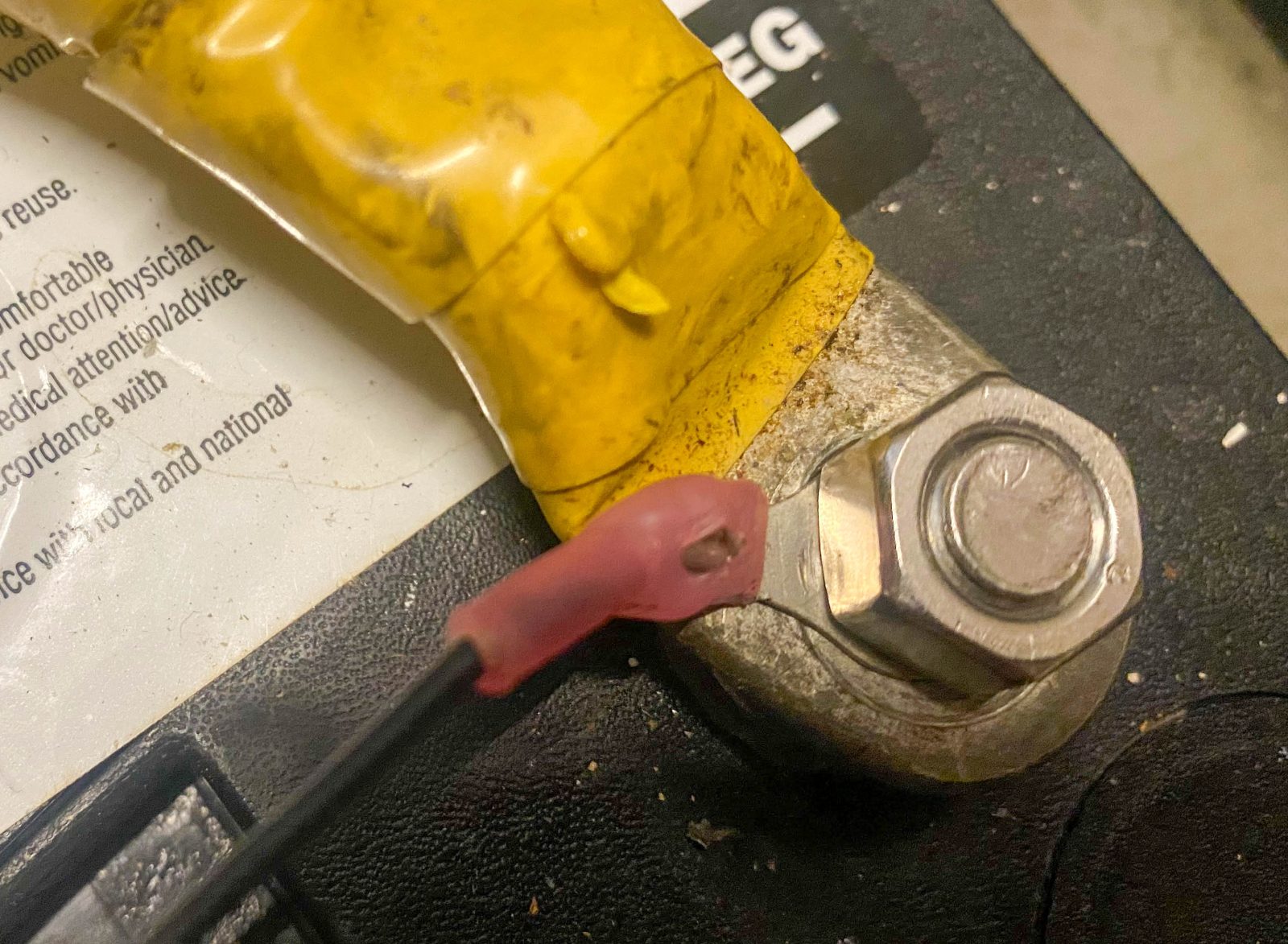
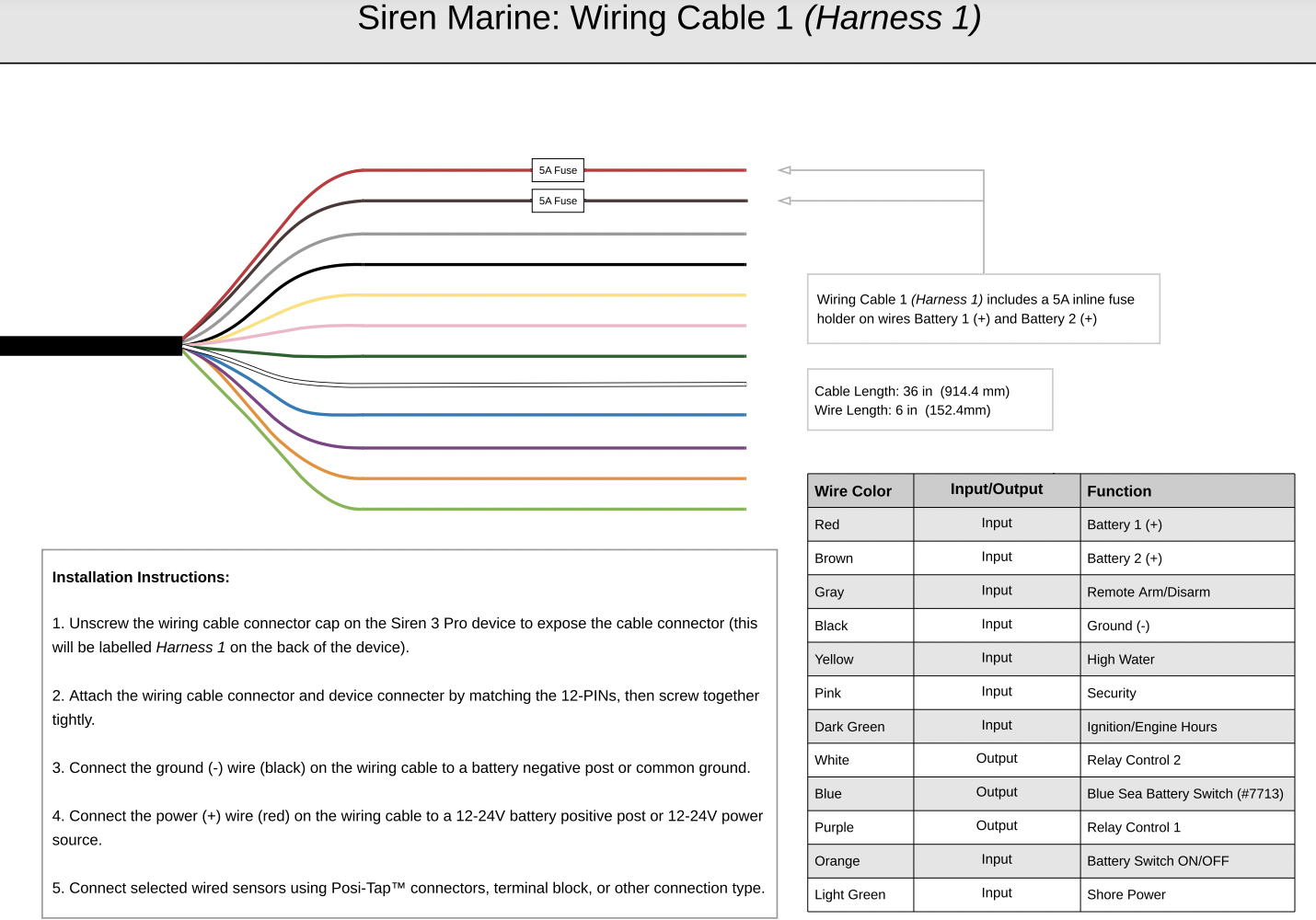
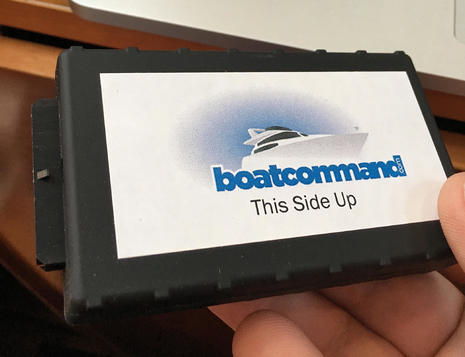









One more item on the plus side. I’ve found their support to be top-notch. When I was setting up my czone system and interfacing it to the Siren, I had issues with Siren not recognizing the Contact 6 switch. When I contacted them thee told me they had not tested that particular device, but that they would work with me to attempt to figure out the problem.
Work with me they did. One of their support techs patiently walked me through the process and even verified my configuration file. The issue turned out to be old firmware on the Czone product and I can now happily report that the Siren does indeed work with the Contact 6 interface.
Interesting article, Ben.
I’m sure Siren makes decent quality stuff – but the subscription-based model is a little irksome, especially for those of us who’ve already invested in Cellular and/or WiFi systems to stay connected to out boats. By comparison, Victron provides a subscription-free portal where you can access a lot of the same data you describe in your article, if you have any of their hardware (eg, Cerbo GX, etc).
The other “elephant in the room” about remote monitoring that rarely if ever gets mentioned – How exactly are you going to power/wire all the sources needed to make this work?? Specifically, many boaters follow the recommended best practice of turning OFF the battery switches when leaving the boat unattended, especially if we’re talking weeks or months. So – is your NMEA2000 network powered off the 24 hour bus? How about your GPS, or AIS? Or Wi-fi and router? Or your engine gateways? Unless you make a concerted effort to address this, a lot of your data is not going to be available remotely. And my understanding is that ABYC has a very short list of “approved” devices that can be wired to a 24HR, unswitched bus, although I admit I can’t really figure out why they would care one way or the other, as long as everything as proper over-current protection.
The alternative, or course, is to just leave the battery switches ON all the time – but I for one am not prepared to do that. Seems like something that needs to be considered before planning a complex monitoring system….
Grant,
Looking at these products from a value perspective it’s tough to beat Victron. But, in order to have a fully monitored boat with only Victron equipment, you’re looking at a fairly large investment in their equipment. Though, with the benefit of no ongoing subscription costs.
As for the always-on issues, I think Siren probably has some pretty good answers. First, the wireless sensors are battery-powered and don’t require any external power. The main unit does require power and although I haven’t yet measured the S3Pro I can tell you the MTC was a pretty small power consumer. I’d expect similar from the S3P. There is a built-in, rechargeable battery that will run the S3 for several days without external power, though that’s certainly not long enough to just throw the battery switches off and leave the boat.
Although for my use, on my boat, I wish Siren read more data from the NMEA 2000 network, I think that for the concerns you’ve mentioned their limited reliance on N2K data means that powering down the N2K network when you leave the boat only means missing engine data (those shouldn’t be running when you’re gone) and tank levels. That seems an acceptable tradeoff.
One more thought on the subscription model and cellular connectivity. I have several monitoring products on Have Another Day, they’re a mix of cellular and WiFi-based devices. I really appreciate the cellular devices because they’re stand-alone. They’re not reliant on a separate router, radio, etc being powered up and properly connected. When I’ve left my boat for long periods of time it’s not unusual to suddenly get a flurry of alerts that a bunch of devices have disconnected. If it weren’t for the cellular devices I wouldn’t know what was happening.
The usual case is that internet connectivity has failed. The cellular-connected devices let me take a look at status, see that shore-power is still active, batteries are still charged, bilge pumps aren’t running, etc. Without them, I’d probably have to have someone go check on the boat. If I only had one monitoring device on the boat it would surely be a cellular model.
-Ben S.
Good points Ben – but I’m still not clear. You say “the main unit does require power…” So, did you wire it to the 24HR bus, or do you just leave your battery switches on all the time? At a minimum I think I would want GPS and AIS data for anti-theft purposes, so there’s every possibility of losing those without the NMEA 2000 network, depending on a vessels particular equipment and configuration.
I’m not saying it can’t be done – but my feeling is that a lot of folks don’t consider all the pieces and power sources until they’ve committed to a system, and then when they realize it’s not going to give them everything they planned on, just resign themselves to leaving the battery switches on all the time. That’s a pitfall I don’t wish to fall in to…
Grant,
I do have my S3P connected directly to an always-on circuit (with appropriate overcurrent protection of course!) But, currently, Siren doesn’t support relaying AIS information via NMEA 2000 or otherwise. There’s a built-in GPS receiver for position. If you mount the S3P in a location where it can’t find a clear view of the sky you can connect an external GPS antenna, but that’s not through NMEA 2000. At present, Siren doesn’t pick up location information from N2K.
I do think Siren has thought through many of the issues you raise. It seems only logical that a monitoring system will need to be powered at all times and such should be engineered for maximum efficiency.
-Ben S.
I hope Siren Marine offers an attractive upgrade path for current MTC users. As the various cellular network providers shut down their 3G networks next year MTC units will start to lose network connectivity and become useless. Per the support FAQ Siren uses Vodaphone SIMs which roam to AT&T and T-Mobile in the USA. AT&T is scheduled to shut down 3G in Feb 2022. T-Mobile has scheduled their 3G shutdown in July 2022. The carriers are doing this to free up spectrum for additional 5G network bandwidth which is understandable.
I contacted Siren support about this and they said I should upgrade to a S3P and can get $100 off right now. However, this is only part of the upgrade. MTC wireless sensors are not compatible with the Siren 3 and need to be replaced. I have 2 high water sensors. One could be replaced with a wired float switch since the S3 supports 2 wired inputs (I am also using the wired high water input on the MTC so the second S3 input is available) but an additional $21 cable is needed on the S3P to access the second high water input. I also have a wired temp sensor connected to my MTC, this would have to be replaced by a wireless temp sensor for the S3. I monitor 2 bilge pumps with wired connections on the MTC, the S3 does not support this, so 2 more wireless sensors would be needed. So I am looking at a minimum of 4 new wireless sensors along with an S3 to replace my current MTC setup at a cost of over $1200.
On my previous boat I installed the original Siren Marine Pixie. When the MTC was introduced Siren had an attractive upgrade plan, if I remember correctly it was 1/2 price and there were not any sensor issues, so it was an easy upgrade.
I hope Siren does something soon for MTC owners. Mine has been installed for only about 3 years which is a short lifetime for marine electronics.
Regarding mounting of the main hub, I was thinking of the engine room. The boat is in SoCal, but in the Summer the ER probably gets up to about 100F or more. Any issues with this?
Where are most people mounting their main hub?
Bill,
Mine is in my engine room in south Florida. Our water temps get into the 90s in the summer and the engine room gets well over 100. I haven’t had any problems and wouldn’t expect any. Siren’s specs (https://sirenmarine.com/products/siren-3-pro) say that it’s rated to operate in between 32F and 113F.
-Ben S.
Siren has just come out with their MTC replacement deal: A Siren 3 Plus with two wireless sensors for $475 and additional wireless units for $109. If you were using the wired bilge pump inputs on the MTC it takes two wireless inputs on a 3 Plus just to do the same thing so this isn’t much of a break. They also want the MTC returned before they send you the 3 Plus so there will be a certain amount of unmonitored time involved while the annual subscription clock is still ticking.
I talked to Siren Marine today about upgrading my MTC. The Siren 3+ has built in GPS, cellular, and wireless sensor antennas like the MTC. It has one 12 pin wired connector, (the 3 Pro has two for additional I/O). The 3 plus does have a single bilge pump wired input, something the Pro does not have. I was told this was to make the Plus closer in wired capability to the MTC. It is also possible to get the 3+ before returning the MTC if you call them. You do need to proved credit card info, they will charge you $400 if you fail to return the MTC. If you want to purchase additional wireless sensors beyond the two included with the offer you will need to call them to get the reduced price, they need to be ordered with the S3+. I got on the list for an upgrade but still need to call back to order additional wireless sensors, my boat has three bilges. I am also thinking about the usefulness of measuring cabin temp, on the MTC this was an inexpensive wired sensor, on the S3+ it is a $109 wireless sensor. They expect to start shipping in mid April.
This whole end of life and upgrade pathway has really left a sour taste in my mouth in regards tot he company. Especially now that they are owned by Yamaha
I just received the Siren 3+ upgrade for my current MTC. I will be installing it this week so I can return the MTC. Fortunately my MTC has continued to get good cellular connectivity even with most of the 3G networks having been shut down.